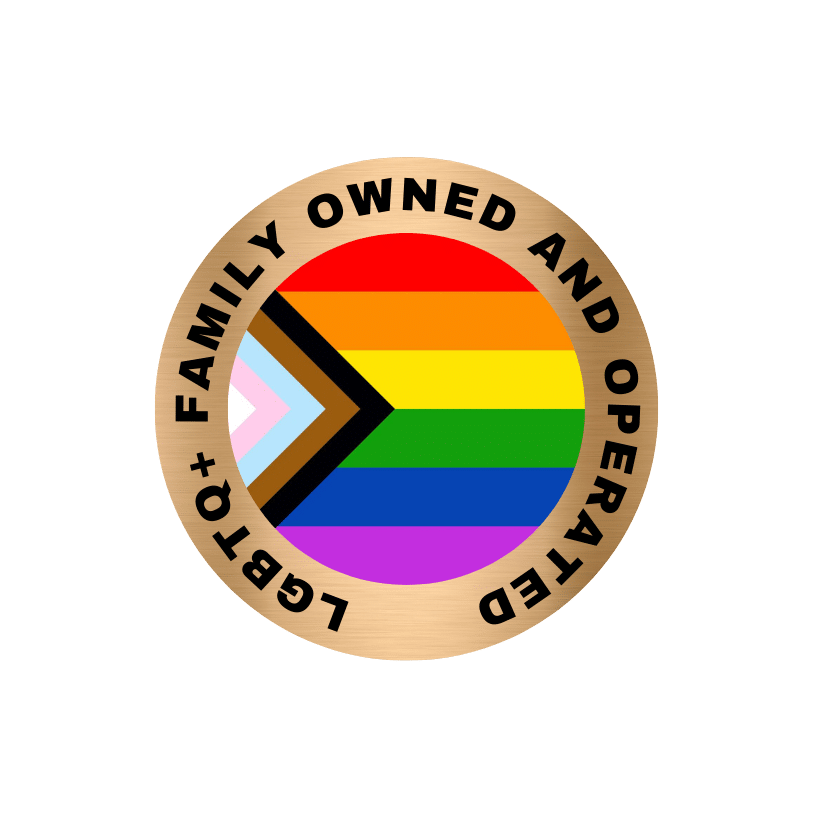Along the life journey of LGBT individuals, there are oftentimes one or several events that negatively impact this specific community.
Many people in the community have experienced traumatic events, all related to their sexual orientation, gender presentation, and gender identity.
Trauma and the LGBT community are nuanced and complex issues that pervade social groups, communities, and countries. This guide attempts to walk you through the topic to stay informed and updated on this critical issue.
The term LGBT stands for lesbian, gay, bisexual, and transgender. However, it is an umbrella term to include various gender identities and presentations that do not fit into the heterosexual or cisgender category.
Some other identities LGBT represents are asexual, two-spirit, queer, questioning, and ally.
And now to understand what trauma: a term used to describe events and circumstances that are physically, emotionally, and socially life-threatening or harmful.
It impairs the ability of the affected individual to cope. It also affects a person’s well-being.
Trauma and the LGBT community have historically been intrinsically linked. Let’s take a look at some of the trauma members of the community face.
Trauma is common. It can affect both LGBTQ youth and LGBTQ adults. Approximately 59% of men and women experience at least one adverse traumatic experience in their lifetime.
This can include being involved in a fire or natural disaster, falling prey to an assault or illness, or witnessing someone else being harmed or killed due to their gender identity or gender expression.
Below, we take a look at the main kinds of trauma that affect the queer community.
According to a study by Education Corner, approximately 90% of American LGBTQIA youth have been victims of bullying. The experience of unsolicited action can harm the social, emotional, and physical fabric of a person.
Bullying is a play of power, and it can wreak havoc on the self-esteem and confidence of victims. The LGBTQIA community is particularly prone to bullying, especially at a young age. Bullying also takes place as discrimination against LGBTQ individuals in the workplace and other settings.
Events like the 2016 Orlando shooting are an example of community violence toward the LGBTQ community. It involves violence by individuals unrelated to the victim, thus based entirely on hatred or other motives against a specific community.
A recent report revealed that 77% of LGBT individuals experience a hate crime at least once in their lifetime? And for most, they experience hate many times over. There was an 86% rise in anti-LGBT hate crimes between 2016 and 2017, as reported by a quintennial report . While the information is dated, its central message holds true even today.
It proves that community violence and prejudiced hatred are still issues we all need to fight for LGBTQ victims.
This can also manifest in the form of community trauma through terrorism and violence, as with the Orlando shooting.
Kids as young as 0-6 can be the target of trauma, as can adolescents and young adults.
LGBTQ youth and children face immense difficulties, as they are singled out and targeted as “different.” This can result in parental abuse/ domestic violence and neglect, as well as abuse and trauma from peers.
Forced conversions, unfortunately, are not yet a thing of the past. Medical trauma and trauma from various health care providers can occur in reaction to the inherent violence that a forced conversion brings.
In fact, conversion therapy, or methods used to change a person’s gender or sexual identity to cisgender, remains legal in 30 states . This practice is proven to have adverse mental health effects that register as trauma.
It also has a high occurrence in transgender or trans people who opt for sex-change surgeries. The pain and aftermath of injuries can cause the body to recognize inherent trauma.
Sexual abuse takes place when an individual is used for the sexual stimulation of another without consent.
The Human Rights Campaign reported that LGBTQ individuals have a higher risk of sexual assault and sexual violence than any other community.
As you can see, trauma exists in so many different forms. It affects LGBTQ individuals worldwide in different ways, irrespective of age, gender, or race. And as we see below, the impacts of this trauma can be far-reaching and dangerous.
LGBTQ surviors touched by trauma can be scarred for life. Many facets of life are affected by trauma or trauma symptoms.
The effects of trauma reach into the financial sphere, too.
Members of the LGBTQ community find it harder to get work placements compared to heterosexual individuals. Many folks have to settle for low-paying jobs to make ends meet.
This can lead to cycles of generational inequity and financial imbalance. And the more the LGBTQ community is economically disenfranchised, the more difficult it gets to gain social acceptance.
Young LGBTQ folks struggle to socialize adequately, as they are often victims of intense bullying. This rolls over into adulthood, as it is challenging to find safe spaces for members of this community.
Those with traumatic histories are more likely to suffer from chronic health conditions. For example, take post-traumatic stress disorder (PTSD) and physical health.
Many LGBTQ youth and LGBTQ survivors have a mental illness such as PTSD due to childhood or past traumatic occurrences. This manifests itself in symptoms including diabetes, digestive issues, paralysis, and hormonal imbalance. It also increases the risk of cardiovascular disease.
In addition to illness, trauma also manifests itself in the form of unhealthy practices. LGBTQ folks are more likely to take on detrimental habits like smoking, excessive drinking, binge eating, or be diagnosed with a substance use disorder.
This, combined with a lack of exercise, can lead to high blood pressure and a compromised immune system.
As seen above, members of the LGBTQ community have faced traumas of all kinds. From sexual trauma to childhood trauma and racial trauma, the body keeps score.
Trauma through mental and physical abuse leads to resultant behavioral difficulties and deficiencies.
In children, this can involve lashing out, rebellion, and social discomfort. In adults, trauma can manifest in unhealthy behaviors like sex and love addiction, substance addiction, and unhealthy eating patterns.
These habits can make it difficult for LGBTQ folks to build a robust support system around them. In turn, this increases feelings of alienation and loneliness, which then trigger stress and anxiety responses.
As you can see, this leads to a self-fulfilling cycle. So many of these experiences and their resultant effects are linked to each other.
Trauma is also directly linked to mental health, as it can have long-lasting effects on an individual’s mental well-being. Most importantly, our mind and body are connected. Thus, when the body feels threatened, it generates a trauma response that triggers the mind. When we don’t feel safe, our minds are on high alert.
What does this result in? Initially, protection. The mind triggers the fight-or-flight response to help the body adapt to danger.
But consistent trauma over a sustained period is another issue. When trauma continues, it can exhaust the mind. This leads to high levels of stress and anxiety, as well as depression and panic.
In fact, according to the Substance Abuse and Mental Health Administration, LGBTQ adults are twice as likely to experience mental health issues.
Thus, members of the LGBTQ community also deal with generalized anxiety disorder and major depressive disorder. And this is on top of prevailing traumatic conditions such as PTSD.
When mental well-being has been threatened to the point of no return, it can trigger suicidal tendencies.
According to a recent study, 41% of LGBTQ youth have considered attempting suicide in 2021. They are also five times more likely to make suicide attempts compared to their cisgender counterparts.
What these numbers show us is astounding. Trauma is so deeply rooted in the LGBTQ community that it triggers suicide responses. This is a direct indication of the health and well-being of LGBTQ folks.
PTSD is a mental health condition that many in the LGBTQ community suffer from.
It can result from a single traumatic experience or a range of challenging events and experiences throughout life. In addition to dealing with the ramifications of trauma, those with PTSD also struggle with depression and anxiety.
For example, PTSD and depression are linked. Those suffering from depression are more likely to have traumatic experiences, which can also trigger the onset of PTSD.
In the LGBTQ community, childhood and sexual trauma can be a severe cause of PTSD. Adolescence is a confusing time to navigate. And for members of the LGBTQ community, sexual confusion is heightened.
This leads to feelings of alienation, where LGBTQ children feel inferior to their heterosexual peers.
In later life, the causes of PTSD and trauma can shift to hate crimes, workplace discrimination, and systemic discrimination in the form of healthcare policies, politics, and more.
The experience of PTSD varies from person to person. However, one of the most common symptoms is negative mood and thoughts. Individuals suffering from the illness might feel emotionally numb or hopeless.
They also experience a more comprehensive range of physical and emotional reactions. For a particularly affected minority group like LGBT, however, the symptoms can be far-reaching.
After the Orlando shooting, many reported reliving the traumatic event. This takes place through constant nightmares, flashbacks, and flash memories.
What are the effects of PTSD, you may be wondering? Let’s take a look at how PTSD can affect the LGBTQ community at large.
PTSD has a lot of the same impacts as trauma. However, PTSD is a mental health condition that primarily affects the LGBTQ community.
Anxiety and the accompanying feelings of fear and anxiety are some of the most significant effects of PTSD. This can trigger aggressive or passive coping mechanisms to maintain safety.
Another effect is feelings of guilt or shame. This stems from the feeling they could have done things differently to change the outcome of the event. LGBTQ members may also feel shame around their identity, as conditioned by society.
Insomnia and other sleep disturbances are other impacts of PTSD. Here, individuals struggle with falling asleep or remaining awake. This can cause distress in everyday life, leading to reduced motivation and productivity, increased social withdrawal, and a lack of optimal functioning.
Lastly, PTSD also triggers chronic pain in the body. The body interprets pain as a danger signal, especially with events like sexual assault and psychological abuse, two of the most prevalent traumas in the LGBTQ community.
This can lead to chronic pain and remind the challenging times, making PTSD symptoms even worse.
Let’s dive into an example to understand the far-reaching consequences of trauma on a minority community.
June 12, 2016, was the date of the now-infamous Orlando shooting. Forty-nine individuals (almost all of them LGBT) were murdered in a queer nightclub in Florida.
The Orlando shooting is just one example of a series of assaults against the LGBTQ community in the U.S. However, it is an important example, as it reminds us that historical trauma exists.
The shooting caused a damaging loss to the community, both in members as well as in morale. Adversity, stigma, assault, and social exclusion have highly negative impacts on well-being.
People still mourn the Orlando incident because it demonstrates how much rampant discrimination still exists in the world. And individuals in the community have to live with the hatred and loss of lives every day.
Thus, it is clear that reparations need to be made. But more importantly, it will be essential to find strategies to deal head-on with trauma. We dive into trauma tackling methods in the section below.
Trauma is a complex issue to face. It is often not linked to just one experience that triggers a traumatic response but rather a range of life events. Whether the experience was direct or indirect, many LGBTQ individuals get retraumatized due to the recurrence of complex events.
One of the main questions in academic circles is, how can we provide care and support to trauma-affected individuals? That’s where trauma-informed care comes in.
Trauma-informed care, or TIC, is based on recognizing that traumatic events deeply affect a person’s body and psyche.
Trauma also violates and terrifies the individual.
The only way to move past this is by creating a safe space where traumatized individuals feel at peace. There should be a commitment never to repeat those experiences. This will slowly build back a sense of autonomy, self-worth, and safety.
According to the Substance Abuse and Mental Health Administration, there are five principles of trauma-informed care. Let’s take a look at them below.

The safety of the traumatized individual should be of the highest importance. This involves instilling an atmosphere of safety by eliminating triggers of past occurrences in favor of friendly faces and support that evoke positive feelings.
The more the individual feels physically and psychologically safe, the more they can move towards healing and well-being.

All trauma-informed therapy should be conducted with absolute transparency. According to these principles, an individual cannot be committed against their will. They need to understand why they are receiving care and what the process entails.
Correlated to this is the foundation of trust. An individual entrusted in the care of a healthcare practitioner or care organization needs to feel safe and respected in the space.
Trust is critical to LGBTQ individuals moving on from trauma because much of trauma stems from a lack of trust.

Another fundamental in trauma aftercare is building flourishing peer support networks. This helps affected individuals feel understood and heard, which can go a long way in validating feelings.
Individuals also need to evolve strategies to help themselves under challenging situations better. These can be coping responses, calming techniques, and de-stressing motions.
Developing mutual self-help prevents overt reliance on external factors and encourages respectful and supporting peers when triggered or retraumatized.

TIC is based on the recognition that healing is accelerated with meaningful sharing of power and decision-making.
Thus everyone, from the family to the client to the caregiver, has a role in healing. This leads to the recognition of the numerous factors at work when it comes to trauma.
And just as many factors can cause trauma, many factors can heal it, too.

The ultimate aim of TIC is empowerment. Individuals should feel safe and supported yet independent to pursue their life goals without restrictions or fears.
However, empowerment also requires an understanding of diversity and intersectionality. Every individual’s experience is unique, and their background will require a personalized approach.
Take, for example, bullying amongst LGBTQ youth. Did you know that Black and Latinx LGBTQ youth are more likely to face mental and physical harassment than white LGBTQ children?
Supporting and empowering an LGBTQ person of color would be very different from supporting a white LGBTQ individual. It is recognizing this difference and working with it (rather than against it) to lead to true empowerment.
The five principles of TIC include popular tactics for treating and preventing trauma in LGBTQ individuals.
However, there are other ways to work through trauma to achieve healing.
Support networks can take you a long way, but consulting with a mental health professional may also be prudent. Specifically, look for therapists trained in LGBTQ issues and have prior experience in providing support to members of this community.
Therapy is all about creating another safe space to unpack experiences. By going through experiences in the present, you help process the past to move towards the future. It also helps unlearn stigmas about mental health and trauma.
Then, LGBT individuals will develop into their preferred identity and grow towards living as their authentic selves. Thus, therapy provides a positive and affirming space to unlearn the trauma and negative experiences.
There is nothing like self-love and self-care to give us a mental boost. Taking care of your mind and body is also a great way to remind yourself that you matter. Feelings of self-worth help individuals move on from past trauma.
Be sure to focus on both mental and physical self-help strategies. This increases feelings of balance and presence, which can help the mind slow down from anxiety and stress.
Trauma and the LGBTQ community is an ongoing issue that needs social reparations for generations to come. That’s why we can’t stress enough the importance of a welcoming LGBTQ community.
Safe spaces help individuals accept their trauma and connect with others who understand what they’ve been through. This acknowledgment of struggle and identity can be crucial to moving on to a happier life.
At No Matter What Recovery, we aim to provide clients with a lifeline to wellness. With a plan for success, aftercare, and sponsorship, we provide support to help everyone live a life of happiness and love.
Be sure to check out our trauma therapy program today!

